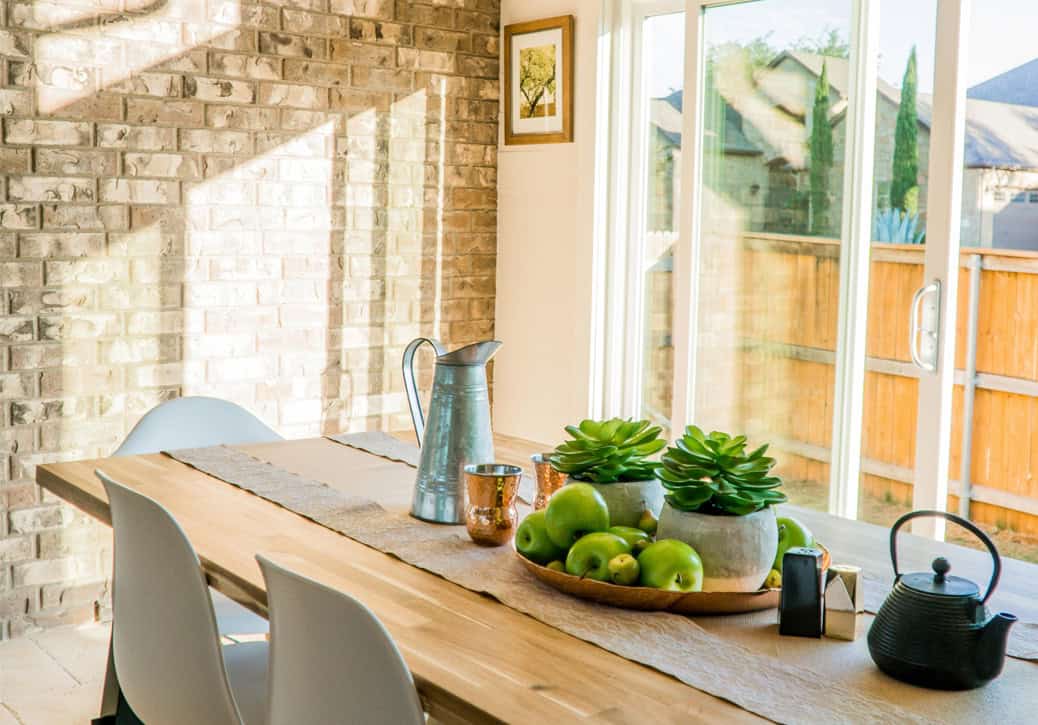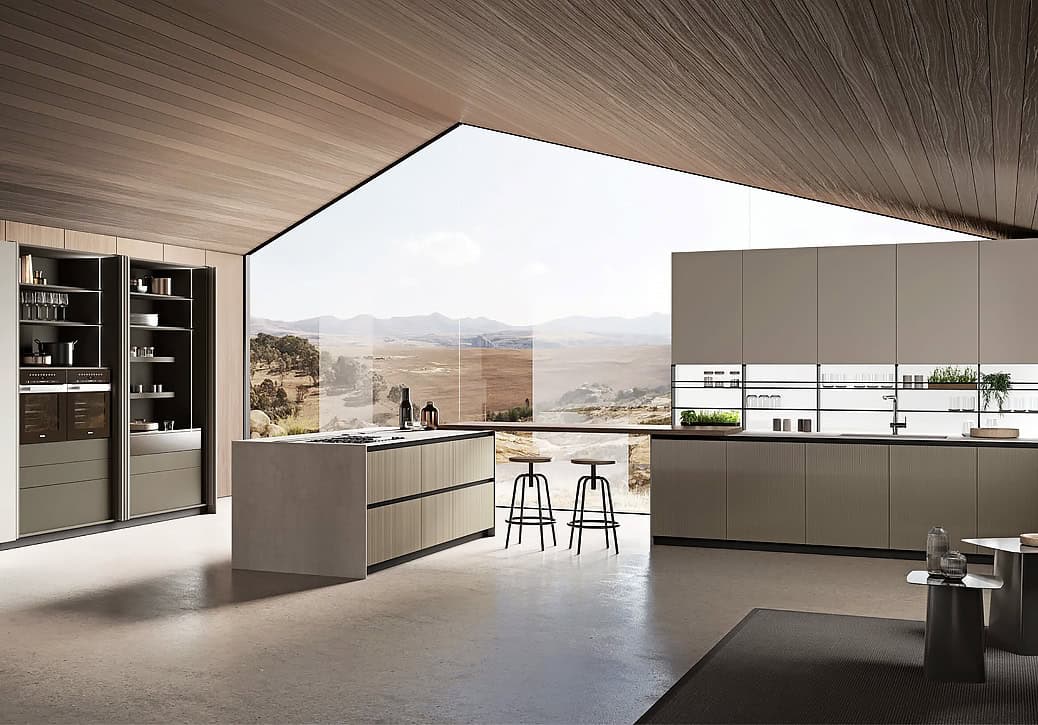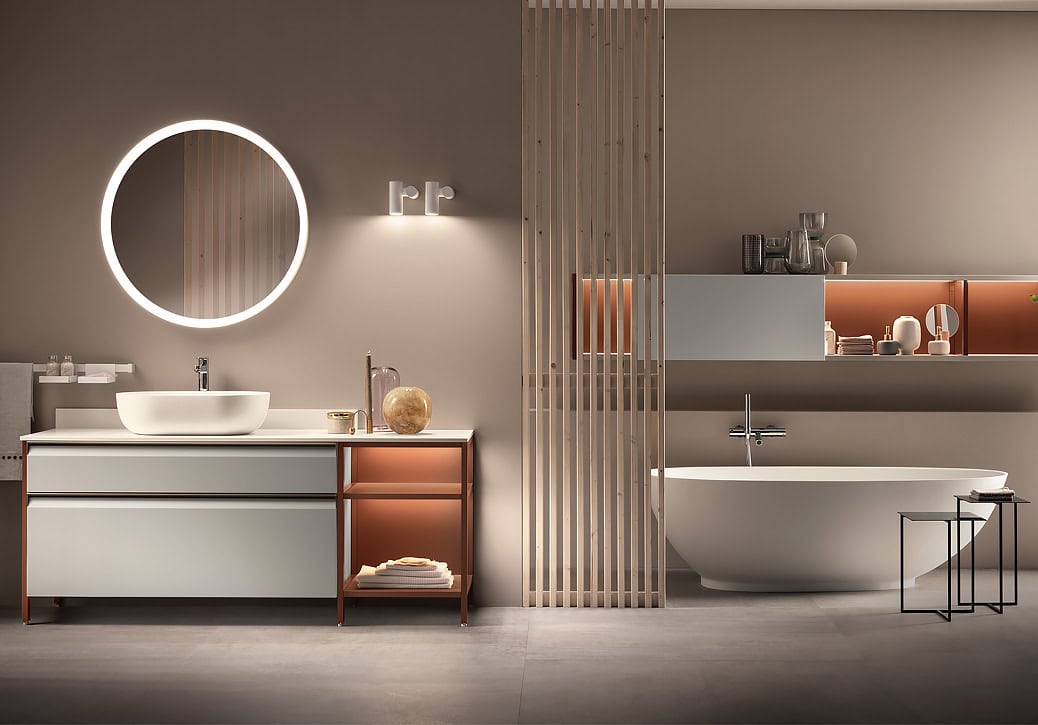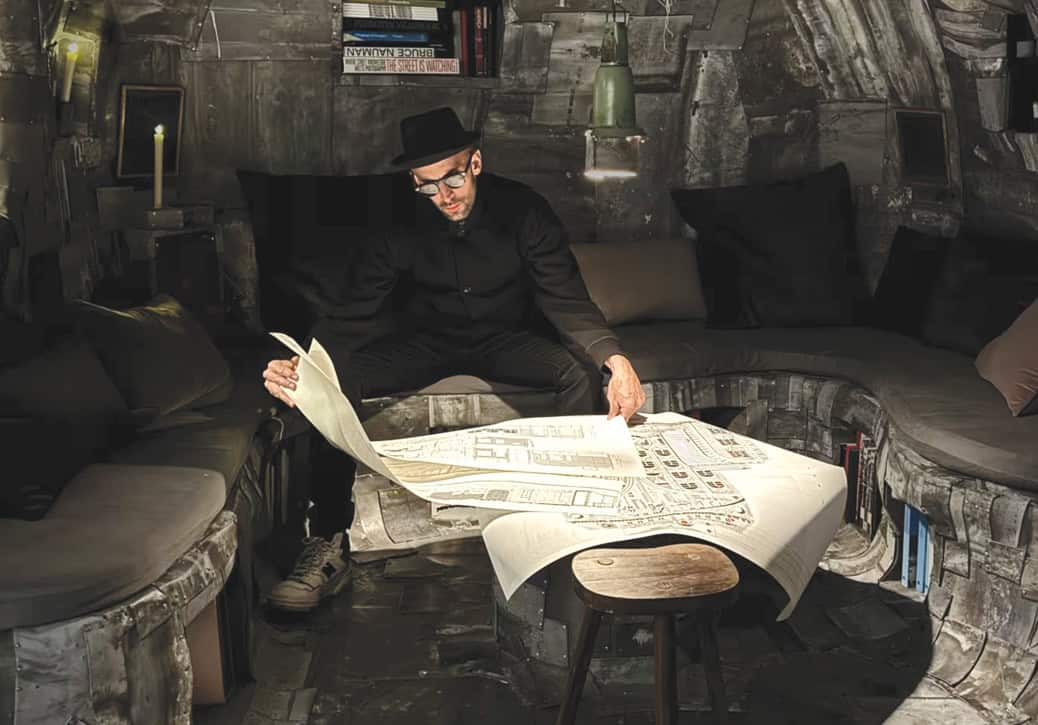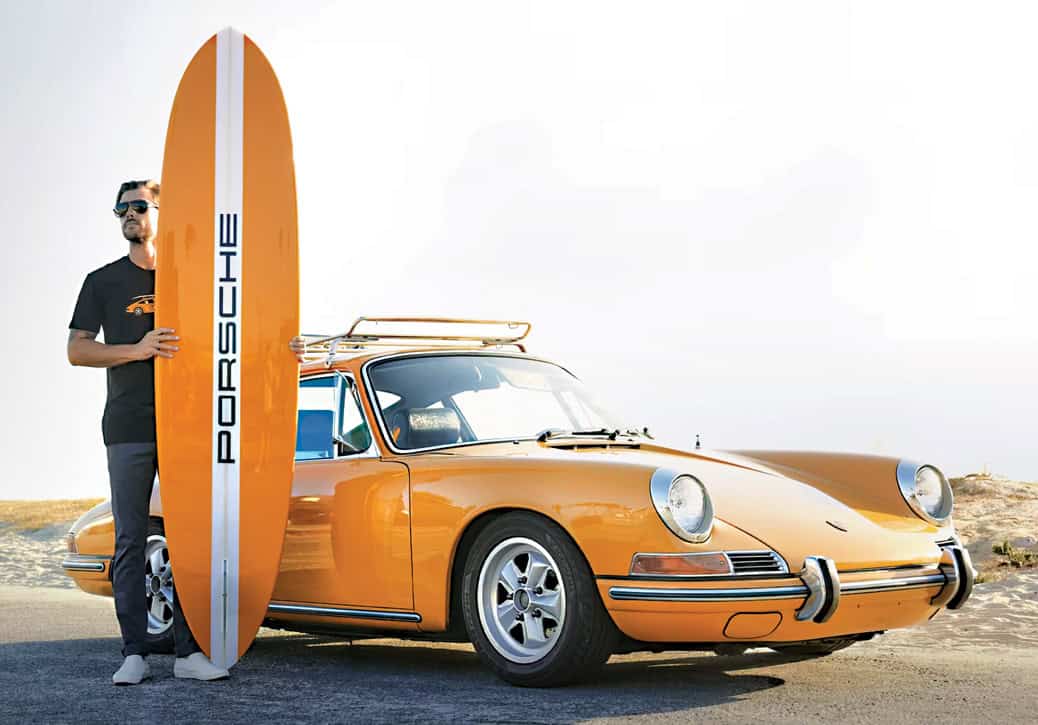Buzzy Ho Chi Minh City, laid-back Huê and urbane Hanoi
By Keith Edwards
 METROPOLE HANOI
METROPOLE HANOI
“Bonjour Monsieur, welcome to the Metropole!” With two vintage Citroens out front and bell boys in classic silver-buttoned jackets and pillbox hats, it’s as if the French never left.
The Metropole has the vibe of a grand European hotel, with an atmosphere of self-assured elegance. Which is perhaps not surprising, given its guest list of literary greats, Hollywood A-listers, heads of state and royalty. I start looking at the list, but stop counting at 140.
The Sofitel Metropole Legend brand is reserved for just a handful of iconic properties worldwide, a status that the Metropole Hanoi richly deserves. My Grand Luxury room is in the original 1901 building. Its high-ceilinged rooms, glistening mahogany floors and
accents are a throwback to days gone by, with their spare but luxurious elegance. In the modern Opera Wing the rooms are more contemporary, lighter and softer with a neo-classical European feel, accented with oriental red elements. It’s not an easy choice, but I prefer the singular ambiance of the original building.
On an exploratory walkabout I discover a sparkling outdoor pool  and the informal Bamboo Bar in the huge, very private courtyard, now formed by the new and old wings of the hotel. Manage to resist the afternoon chocolate buffet in the airy conservatory of the Le Club bar but temptation overcomes me when I come across L’Epicerie, a real French patisserie with a slight Asian inflection in the form of seasonal moon cakes. With my appetite temporarily sated, I make a dinner reservation at the Metropole’s Spices Garden. (I’m always a bit leery of local food stalls so dining in is fine by me.)
and the informal Bamboo Bar in the huge, very private courtyard, now formed by the new and old wings of the hotel. Manage to resist the afternoon chocolate buffet in the airy conservatory of the Le Club bar but temptation overcomes me when I come across L’Epicerie, a real French patisserie with a slight Asian inflection in the form of seasonal moon cakes. With my appetite temporarily sated, I make a dinner reservation at the Metropole’s Spices Garden. (I’m always a bit leery of local food stalls so dining in is fine by me.)
Once seated, wine in hand, I plump for the Hanoi menu, which steps me through a flight of delicate, carefully crafted and artistically presented renditions of the street food I might be missing. No motorbike fumes here.
The next night brings dinner at Le Beaulieu, a contemporary haute brasserie under the charming, classically trained French Chef de Cuisine, Olivier Genique. Eschewing gastronomic fripperies such as flower-bedecked food, his aim is straightforward: “The finest ingredients, three or flavours, nicely plated,” he tells me, adding,
“It’s hard to be simple.” Adding to his challenge is balancing the varied palates and conflicting expectations of guests from around the world. “Some want low fat,” he winces as he tells me. Others demand much less seasoning than he would use in Paris. I give him licence to cook and season as he would in Paris and, oh my gosh, was that ever a clever idea.
I start with Hokkaido scallops presented on a thin stone platter. Their sweetness is complimented by Genique’s delicate lemon dressing, while their creaminess is a counterpoint to the more earthy textures of fava beans and slivers of radish. I linger over the exquisite simplicity.
My slow-cooked duck breast is a true test of simple excellence. Two plump slices dominate the plate. The flesh is a vibrant red with perfectly browned skin. One bite and I know I’m in the hands of a great chef—it’s melt-in-the-mouth indulgence. The richness is eloquently played against parsnip cream purée, apple and grapes, with added zing from a poivrade sauce.
To finish, I’m urged to try one of Genique’s specialities: an upside-down chocolate soufflé. Again, simplicity reigns, with an opulent but not overly sweet taste and mouth feel.
The next day, after an exhausting scooter-dodging meander around the vibrant old French Quarter, I head back to recuperate at the Metropole’s photogenic La Terrasse open-air bar with an icy gin and tonic. Suddenly, I’m an involuntary walk-on extra at several weddings. A steady stream of brides and grooms, tailed by paparazzi-style photographers, line up to capture memories of their day against the hotel’s imposing architecture. Some seem a little uncertain, others are in awe. They should not be. Although grand in the European tradition, the Metropole Hanoi is a delightful blend of warmly inviting elegance, where I’m beginning to feel like part of the family or perhaps a stand-in best man.
 THE REVERIE SAIGON
THE REVERIE SAIGON
The erratically weaving motorbike headlights look like dancing fireflies from my spectacular vantage point on the 39th floor of The Reverie Saigon in the business district of Ho Chi Minh City (formerly known as Saigon). Not long ago I, too, was down there in the hot, humid and energizing frenzy that is modern-day Ho Chi Minh City. Now, strawberry mojito in hand, I realize that the edgy extravagance of this, the tallest hotel in the city, perfectly reflects the pulsing energy of this place.
The Reverie’s entrance is tucked away in a courtyard off Nguyen Hue Boulevard, perhaps intuitively placed beyond the steely gaze of a giant statue of Ho Chi Minh himself. Stepping in from the tropical heat, I’m almost overwhelmed by the visual excess. Vibrant colours and textures clamour for my attention: A profusion of colourful marble, mosaics, gold leaf, mirrors and glass are woven into intricate patterns and designs.
Fortunately, the courteous reception team is an oasis of serenity, their calm efficiency balanced against the more exuberant décor. Most eye-catching: A classical Rocco-style bombe chest adorned with large bird-like wings that verges on the whimsical. Glamorous furniture is from four leading contemporary Italian designers: Provasi, Colombostile, Giorgetti and Visionnaire.
their calm efficiency balanced against the more exuberant décor. Most eye-catching: A classical Rocco-style bombe chest adorned with large bird-like wings that verges on the whimsical. Glamorous furniture is from four leading contemporary Italian designers: Provasi, Colombostile, Giorgetti and Visionnaire.
When it comes to design, my junior suite continues what the public areas started. Beyond the expectations of what a first-timer might expect in Ho Chi Minh City, I’m treated to glorious Frette linens and robes, Hermès toiletries, crystal faucet handles and a television in the shower. Should I care to make tea, there is a full-size bone china teapot complete with tea strainer. A good start, indeed!
In the Reverie’s Royal Pavilion restaurant, I decide on a classic Cantonese meal. The delicate, double-boiled scallop and dried mushroom soup sings with an earthy richness—a flavourful treat made even better by the chef’s use of elusive Japanese matsutake mushrooms. The mouth-watering main is braised seafood with abalone sauce, beautifully presented and topped with a tracery of crispy noodles and a spikey carrot carving that resembles a flower in full bloom. Another exceptional touch: homemade soy sauce set off with a fiery red pickled chili. As if picking up on the whimsy of some of the furnishings, my dessert, a sweet, steamed bun, stares at me with pink ears, a snout and black piggy eyes.
The Long @ Times Square has been called a parlour to the city. Stretching between Dong Khoi (the city’s most fashionable street) and Nguyen Hue (the most monumental of boulevards), it’s just the place for a quiet late-night rendezvous. Also not to be missed is The Long @ Times Square antipasto and tapas counter, which was designed in and imported from Italy. I treat myself to imported cold cuts, burrata cheese and homemade marinades.
Worth a visit all on its own is the 32-flavour gelato bar, with distinctive Asian homemade selections: sour sop, purple sticky rice and salted caramel cashew. Except for local specialties, the fruit is imported from Italy and France, the chocolate from Belgium and the milk from Germany.
As I return to my suite, the place is quiet as a dormouse. The bed’s been turned down, the ice bucket has been refilled and the television is showing a blazing log fire…no doubt to keep the 90-degree evening air at bay!
 LA RÉSIDENCE HUE HÔTEL & SPA
LA RÉSIDENCE HUE HÔTEL & SPA
Something was missing. As I breakfasted in the cool of the early morning on the patio of La Résidence Huê Hôtel & Spa, all I could hear was birdsong. What had happened to the almost ubiquitous cacophony of scooter hooting? Established as the capital of unified Vietnam in 1802, Huê was not only the country’s political but also
its cultural and religious centre under the Nguyên dynasty.
La Résidence is the faithfully restored Art Deco home of the former French colonial governor. Beautifully restored and redeveloped in 2005 as a design hotel in the Accor MGallery Collection, La Résidence is set in a serene oasis in the midst of meticulously tended gardens of palms and frangipani. Just steps from the Perfume River that flows through the city, the hotel’s distinctive bowed façade, long horizontal lines and nautical flourishes are hallmarks of the 1930s’ school of Art Deco architecture. Paris-based interior designer Brigitte Dumont de Chassart scoured design archives for inspirational touches throughout the hotel, which can now be seen in its high ceilings, terrazzo floors, hand rails, balconies, light fittings and furnishings.
My illusion of a bygone era is complete. I linger over a perfect flaky croissant and coffee, not wanting to spoil the idyllic moment. This is truly a place to relax and unwind: A strong counterpoint to the intoxicating but at times exhausting cities of Ho Chi Minh City and Hanoi.
La Résidence’s concierge has arrang-ed for a taxi to take me to the imposing UNESCO-listed Imperial City. The massive complex, which has survived the effects of three wars, is sufficiently well-preserved and home to the Huê Citadel, the Ngo Môn Gate, the tombs of several emperors and much-talked about landscape architecture. The structures of the Complex of Huê Monuments are carefully placed within the site and aligned cosmologically with the Five Cardinal Points (centre, west, east, north and south), the Five Elements (earth, metal, wood, water and fire) and the Five Colours (yellow, white, blue, black and red), with the central structure being the Citadel that I can actually see from my room.
After my visit, I take a short journey down the Perfume River, also known as the Huong, on one of the gaudily decorated, somewhat rickety, but serviceable river dragon boats. In the autumn, flowers that have fallen into the water from the orchards upriver are said to give it a perfume-like aroma, hence the name.
My dragon boat delivers me to the Thiên Mu Pagoda, where a Buddhist monastery was established in 1601. Here, my new driver greets me and we set off to tour some of the astonishing tombs of former emperors Tu ?úc, Minh Mang and Khái ?inh.
Returning after a somewhat sticky day, it’s time for a cocktail at the hotel’s outdoor salt-water poolside bar and a wonderfully refreshing swim before my massage. Afterwards, I head for a late dinner at the hotel’s main restaurant, La Perfum. I’m offered an extensive Western menu, but the lighter local choices on the Vietnamese menu win the day. I have come to appreciate the healthy, herb-infused subtleties of Vietnamese cuisine and choose sautéed calamari with Vietnamese satay and vegetables. That, and a crisp glass of white wine, makes a perfect end to a reward-
ing day of sightseeing.
I’m not surprised that La Résidence Huê has made Travel + Leisure’s top 500 hotels in the world for several years running, and is one of the Condé Naste Readers’ Choice Best Hotels in south-east Asia.



